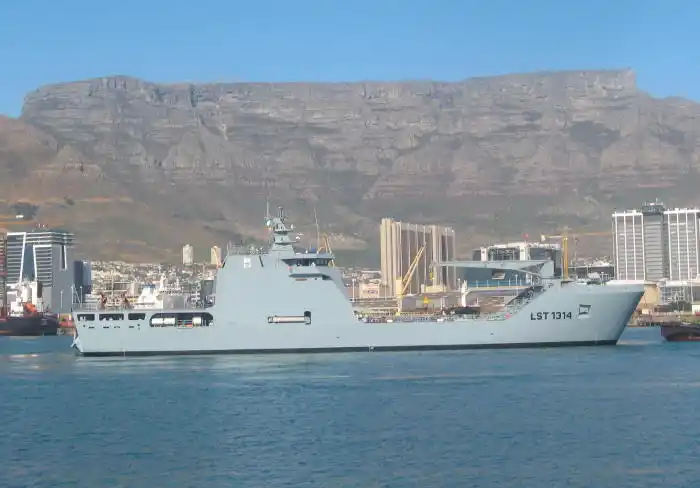As NNS Kada, Nigeria’s newly built landing ship tank steams for home, the navy has placed an order for a second vessel of the same class.
Damen Shipyards has commenced building the second vessel for the Nigerian Navy to help boost it’s amphibious, sealift and logistical standing.
This was revealed in a press release by Rear Admiral SS Garba, the Chief of Policy and Planning of the Nigerian Navy during the 66th Navy Week celebration on 24 May.
The statutory duty of the Nigerian Navy (NN) has always been to protect and defend the territorial integrity of the nation.
In line with this mandate, the navy in the past decade has placed a premium on operational availability of ships, training and motivation of personnel.
Since then, the NN has made significant strides in the recapitalisation of her fleet, which involves surface combatant acquisition including five OCEA FPB, four x C-Falcon 17m Inshore Patrol Craft from OCEA SA, four units of 17M Manta Boats by Messrs Suncraft, two x 40m Fast Patrol Boat by Messrs DAMEN, one Hydrographic Survey Ship from OCEA SA (NNS LANA), while the contract for another 35m Hydrographic Survey Ship has been signed with OCEA Shipbuilding, France.
In the same period, on 1 April 22, the Service took delivery of its newly constructed Landing Ship Tank (LST) – 100, NNS KADA at DAMEN Shipyard in Sharjah, UAE. Subsequently, the vessel set sail on her maiden voyage to Nigeria.
NNS Lana and the second vessel currently being built will replace the two decommissioned Hippo-class landing ships NNS Ambe and NNS Ofiom which were Type 502 amphibious vessels built by Howaldtswerke-Deutsche Werft (HDW) in Germany in 1978.
With a lenght of 100.8 metres, displacement 1,300 tonnes, the new LST has a complement of 32 crew and can carry additional 250 persons.
LST-100 is powered by two Caterpillar/Cat 3516 C-rating engines and 4 Caterpillar C-18 generators, delivering an endurance of 15 days at 15 knots.
The vessel can carry two embarked LCVPs (landing craft, vehicle, personnel), a helicopter/UAV on the flight deck, unmanned undersea vehicles and miscellaneous cargo with a 25 ton deck crane.
In humanitarian missions or evacuation, the vessel can accommodate over 450 persons on its upper and lower decks.








